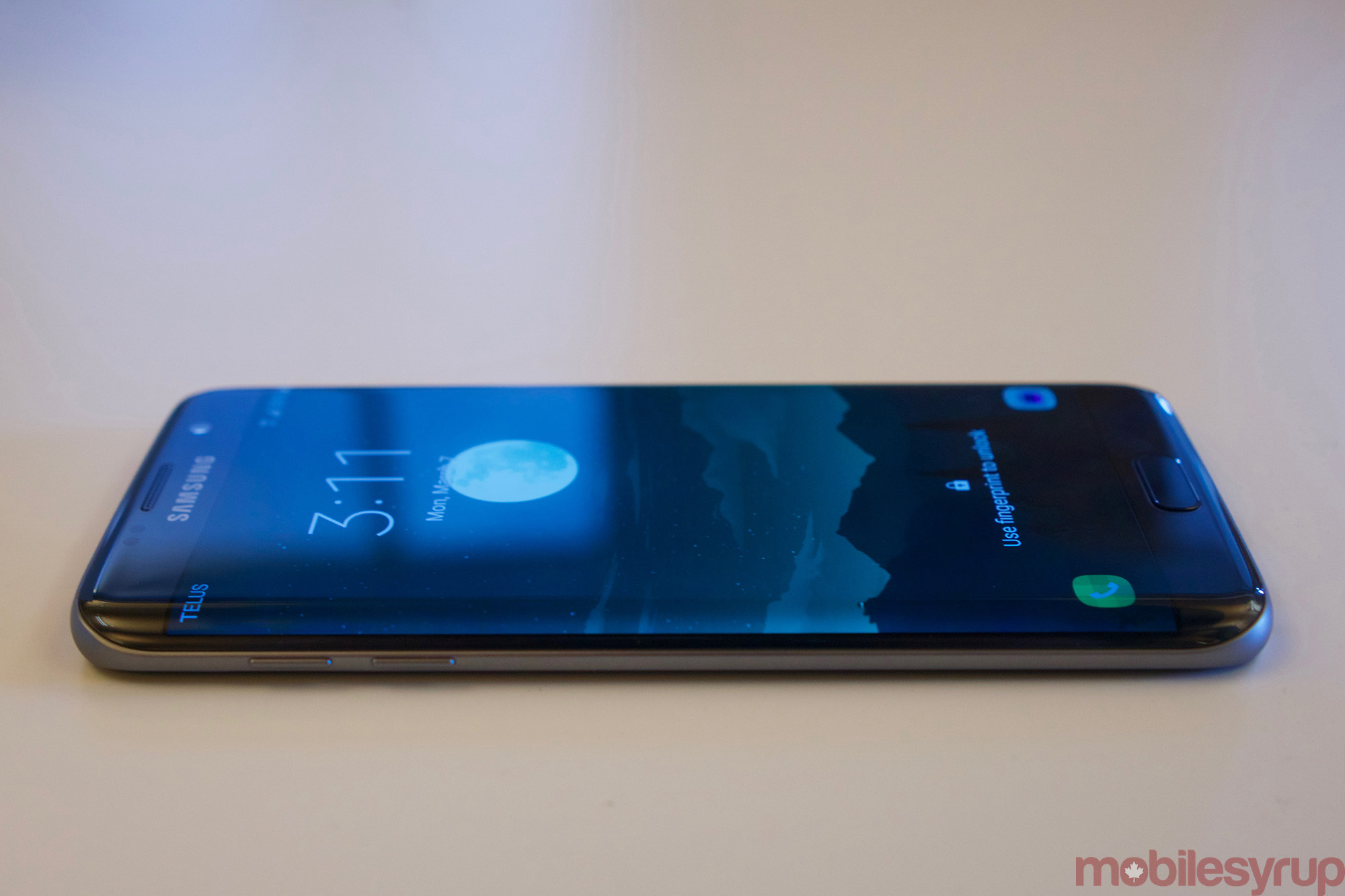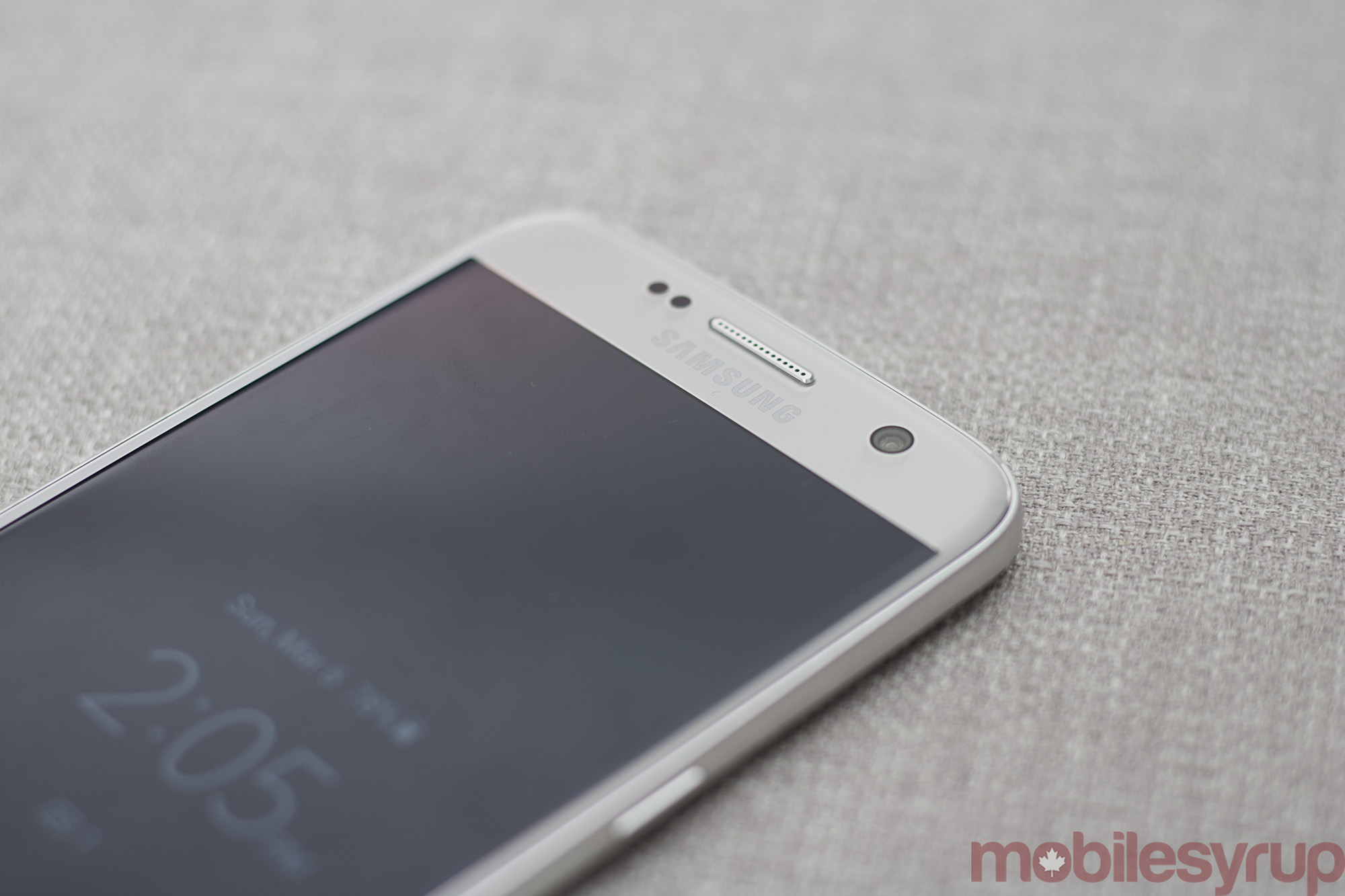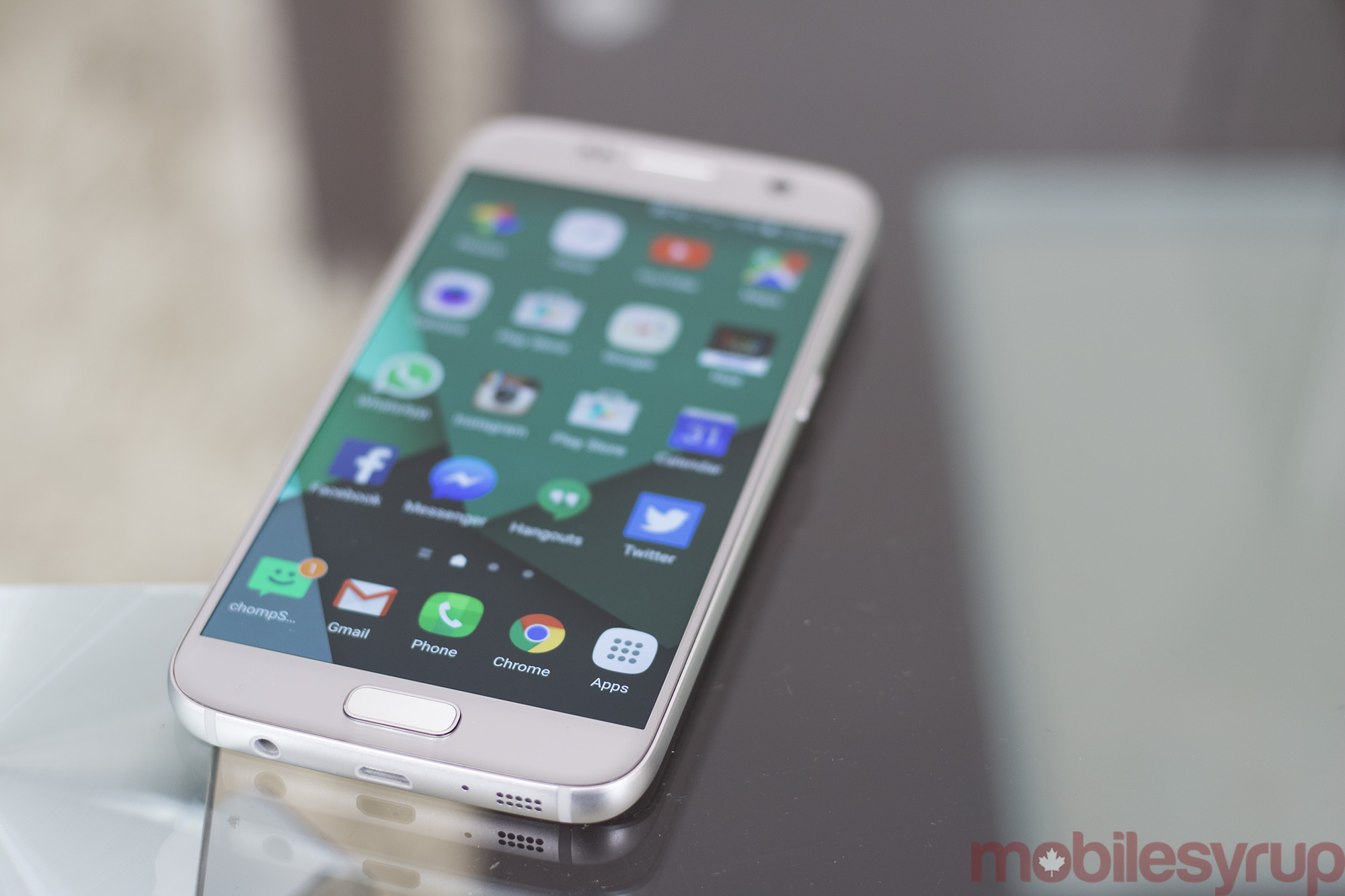
The Pros
- One of the most powerful smartphones on the market.
- Stellar camera with fast autofocus.
- Impressive battery life.
- Size differentiation between S7 and S7 edge targets different users.
The Cons
- TouchWiz still features strange design decisions
- Expensive, even on a 2-year plan.
- Iterative update over the S6 (this means it might not appeal to S6 and S6 edge owners)
One thing is clear about Samsung’s latest Galaxy flagship smartphones: 2016 is a year of iteration for the company.
At first glance, the Galaxy S7 and S7 edge look nearly identical to their predecessors, the S6 and S6 edge, but given the warm reception Samsung’s previous marquee devices received from both fans and critics, it’s difficult to fault the company for releasing what amounts to an act of impressive refinement.
Last year’s Galaxy marked a significant shift from the S5, moving the premium smartphone line away from the plastic build of the S4 and S5, to a Gorilla Glass 4 front and back, and a aluminum bezel. Samsung was onto something with the S6’s design, so it makes sense for the company to build on this direction with the S7.
With the S6/S6 edge, we saw Samsung take cues from Apple, honing in on improving specific aspects of its flagship smartphones, removing most of the bloat and gimmicks featured in the S4 and S5, two well-received smartphones hindered by TouchWiz, Samsung’s Android skin. With the S7/S7 edge, Samsung has maintained this strategy, improving specific aspects of the smartphone the company hopes its customers actually care about, specifically related to overall design, camera, battery and hardware.
Samsung Galaxy S7
Samsung Galaxy S7 edge
Display
5.1-inch Quad HD Super AMOLED
5.5 inch Super AMOLED capacitive touchscreen, 16M colours
Processor
Exynos 8890
Exynos 8890
RAM
4GB
4 GB RAM
Storage
32GB + microSD
32 GB
Dimensions (in.)
142.4 x 69.6 x 7.9 mm
150.9 x 72.6 x 7.7 mm
Weight
152g
157 g
Rear Facing Camera
12-megapixel f/1.7
12-megapixel f/1.7
Front Facing Camera
5MP front-facing camera f/1.7
5MP front-facing camera f/1.7
OS
Android 6.0 Marshmallow
Android 6.0 Marshmallow
Battery
Non-removable Li-Ion 3,000mAh
Non-removable Li-Ion 3600 mAh battery
Network Connectivity
LTE: B1/B2/B4/B5/B7/B8, HSPA: B1/B2/B4/B5/B8, GSM: 850, 900, 1800, 1900 MHz
LTE: B1/B2/B4/B5/B7/B8, HSPA: B1/B2/B4/B5/B8, GSM: 850, 900, 1800, 1900 MHz
Sensors
Fingerprint (front-mounted), accelerometer, gyro, proximity, compass, barometer, heart rate, SpO2
Fingerprint (front-mounted), accelerometer, gyro, proximity, compass, barometer, heart rate, SpO2
SIM Type
Nano SIM
nano SIM
Launch Date
March 11, 2016
March 11, 2016
Misc
Samsung Pay (Visa, MasterCard certified), IP68 certified - dust proof and water resistant over 1.5 meter and 30 minutes
Samsung Pay (Visa, MasterCard certified), IP68 certified - dust proof and water resistant over 1.5 meter and 30 minutes
Display
Samsung Galaxy S7
5.1-inch Quad HD Super AMOLED
Samsung Galaxy S7 edge
5.5 inch Super AMOLED capacitive touchscreen, 16M colours
Processor
Samsung Galaxy S7
Exynos 8890
Samsung Galaxy S7 edge
Exynos 8890
RAM
Samsung Galaxy S7
4GB
Samsung Galaxy S7 edge
4 GB RAM
Storage
Samsung Galaxy S7
32GB + microSD
Samsung Galaxy S7 edge
32 GB
Dimensions (in.)
Samsung Galaxy S7
142.4 x 69.6 x 7.9 mm
Samsung Galaxy S7 edge
150.9 x 72.6 x 7.7 mm
Weight
Samsung Galaxy S7
152g
Samsung Galaxy S7 edge
157 g
Rear Facing Camera
Samsung Galaxy S7
12-megapixel f/1.7
Samsung Galaxy S7 edge
12-megapixel f/1.7
Front Facing Camera
Samsung Galaxy S7
5MP front-facing camera f/1.7
Samsung Galaxy S7 edge
5MP front-facing camera f/1.7
OS
Samsung Galaxy S7
Android 6.0 Marshmallow
Samsung Galaxy S7 edge
Android 6.0 Marshmallow
Battery
Samsung Galaxy S7
Non-removable Li-Ion 3,000mAh
Samsung Galaxy S7 edge
Non-removable Li-Ion 3600 mAh battery
Network Connectivity
Samsung Galaxy S7
LTE: B1/B2/B4/B5/B7/B8, HSPA: B1/B2/B4/B5/B8, GSM: 850, 900, 1800, 1900 MHz
Samsung Galaxy S7 edge
LTE: B1/B2/B4/B5/B7/B8, HSPA: B1/B2/B4/B5/B8, GSM: 850, 900, 1800, 1900 MHz
Sensors
Samsung Galaxy S7
Fingerprint (front-mounted), accelerometer, gyro, proximity, compass, barometer, heart rate, SpO2
Samsung Galaxy S7 edge
Fingerprint (front-mounted), accelerometer, gyro, proximity, compass, barometer, heart rate, SpO2
SIM Type
Samsung Galaxy S7
Nano SIM
Samsung Galaxy S7 edge
nano SIM
Launch Date
Samsung Galaxy S7
March 11, 2016
Samsung Galaxy S7 edge
March 11, 2016
Misc
Samsung Galaxy S7
Samsung Pay (Visa, MasterCard certified), IP68 certified - dust proof and water resistant over 1.5 meter and 30 minutes
Samsung Galaxy S7 edge
Samsung Pay (Visa, MasterCard certified), IP68 certified - dust proof and water resistant over 1.5 meter and 30 minutes
Subtle design shifts

While it’s true the S7’s build is similar to the S6’s, its slightly curved back and front – borrowed from the Note 5 – give the smartphone a unique look that helps it stand out from the wash of other flagship Android devices on the market. The unique curvature also makes it easier to pick up the smartphone from a flat surface. This results in a slightly narrower bezel that’s almost flush with the sides of the phone. Still, those hoping for a G5-like complete overhaul with the S7, will be disappointed. At the outset, both the S7 and S7 edge look nearly identical to their predecessors, save for a few subtle differences.
Just like last year’s S6, the S7 features aluminum sides and a Gorilla Glass 4 front and back, which means yet again, Samsung’s new flagship Galaxy devices are a magnet for fingerprints and smudges. What is interesting about the new handsets however, is the S7 measures in at 5.1-inches, and the S7 edge is 5.5-inches, 0.2-inches smaller than the S6 edge+, which strangely, was only released a few months ago in Canada. It seems Samsung is aiming to simplify its device lineup with the S7/S7 edge, a move that makes sense considering the number of high-end Android phones currently on the market.

In general, the S7 will appeal to those who prefer smaller smartphones, coming in at just slightly larger than Apple’s 4.7-inch iPhone 6s (which is still be too large for some). The S7 edge, with its considerably larger size, is targeting the phablet demographic, falling slightly short of Samsung’s flagship phablet, the Note 5.
What’s most interesting about the S7/S7 edge, however, is how Samsung seems to have taken criticism of the S6 to heart. Last year, Galaxy fans complained about the S6’s lack of a micro-SD card slot, a popular feature in the S5 that allowed users to expand the phone’s storage. With the S7, Samsung has brought the micro-SD card slot back. The same can be said about the S7’s IP 67-certified waterproof casing, another popular S5 feature ditched with the release of the S6.
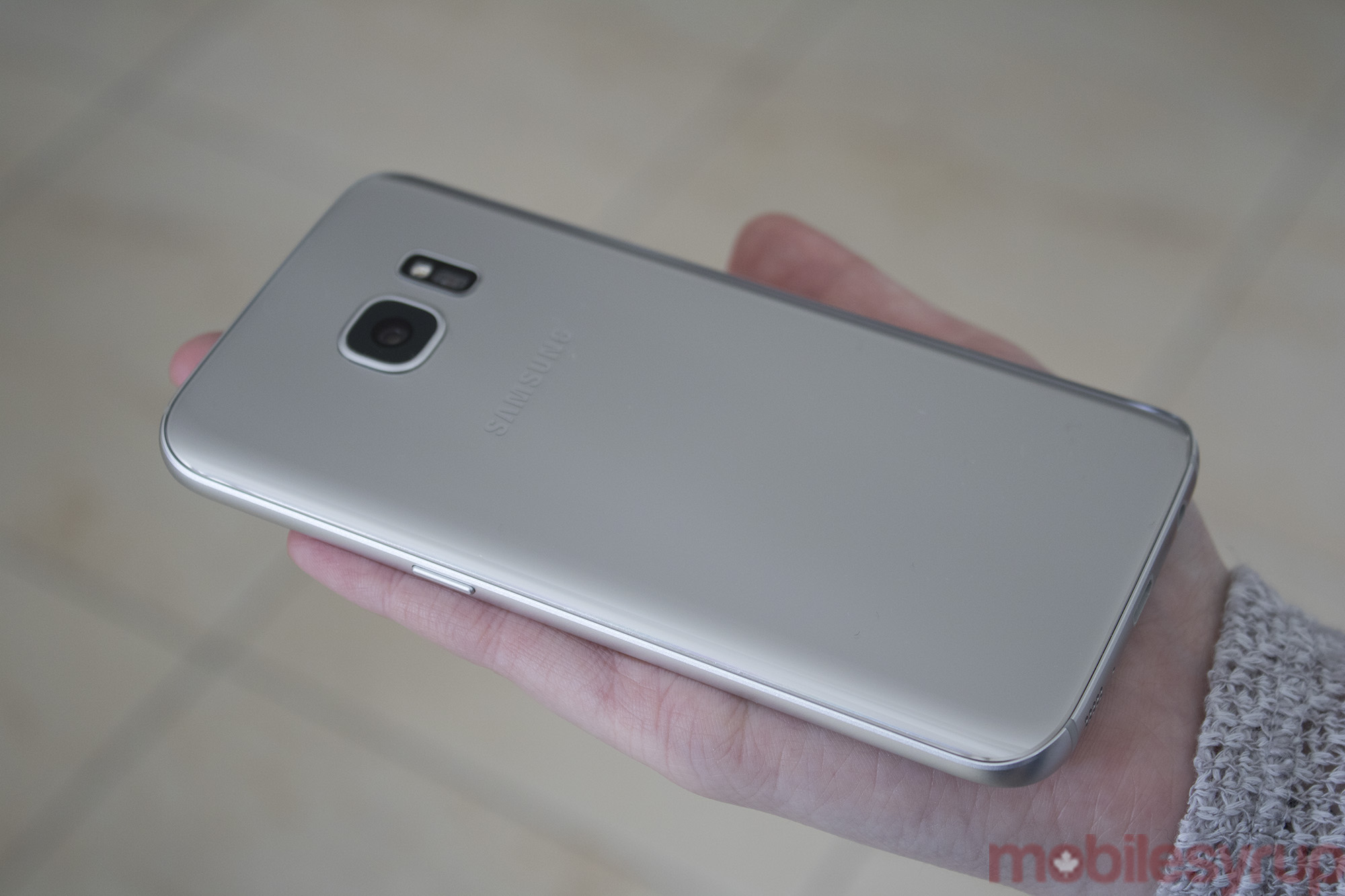
The only holdout fan demand is the ability to remove the S7’s battery, a feature LG heavily touted the G5 is capable of during its keynote presentation at Mobile World Congress. While this is far from the first time an OEM has listened to criticism of past devices, it’s refreshing to see Samsung adopt this approach with the S7/S7 edge.
In terms of other changes, the S7’s home button, which also acts as its still snappy fingerprint scanner, is slightly more square, and doesn’t protrude as far from the phone when compared to its predecessor.
Flagship powerhouse

Under the hood is where most of the S7/S7 edge’s improvements have gone down. In terms of battery, the S7 edge features a hefty 3,600 mAh battery, and its smaller counterpart comes equipped with a 3,000 mAh power source.
Our tests indicated that both the S7 and S7 edge performed excellently when it comes to battery life. In my experience, the S7 easily lasted an entire work day of moderate use, and even after that, well into the evening. Turning off the S7/S7 edge’s always-on display, a feature I didn’t find very useful (the always-on display is only able to show time, missed calls and emails) despite its undeniably cool factor, improved battery life, leading me to believe that Samsung’s “1 percent per hour claim” isn’t completely accurate.
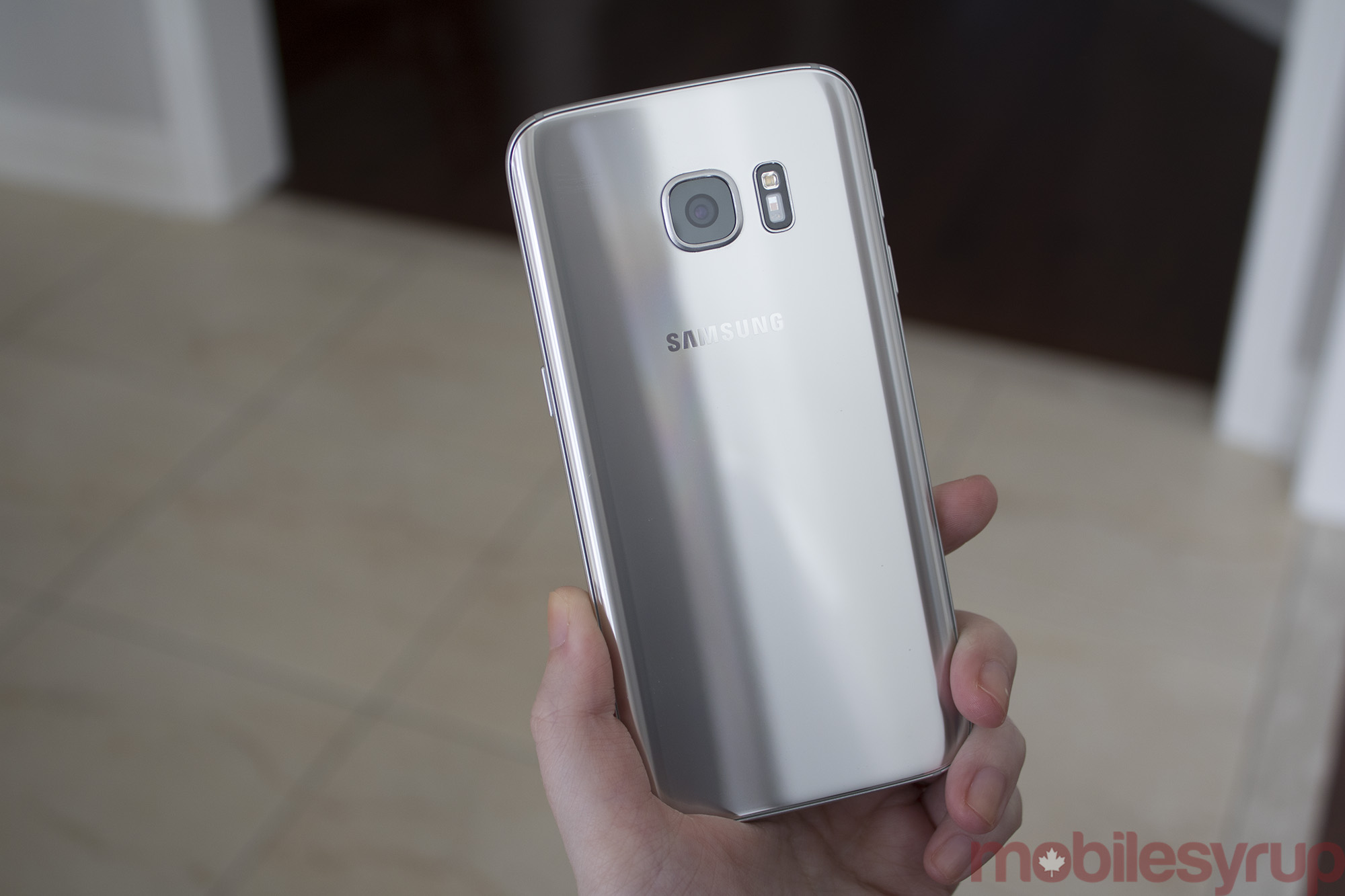
It’s worth pointing out, however, that the S7’s AMOLED 1440 x 2560 pixel display, allows the phone to light up individual pixels as needed, which means it doesn’t use as much battery power as it would if the screen was always completely illuminated.
In Canada, both the S7 and S7 edge feature Samsung’s own silicon, the Exynos 8890, which according to some benchmark scores, lags slightly behind the Qualcomm 820, the processor included in the smartphone in other regions, most notably the U.S market. The average user, however, likely won’t notice a performance difference between the two processors.

In our tests, whether multitasking between resource-intensive apps, or playing high-end video games, the S7 performed excellently, with no lag or stuttering. The smartphone’s 4GB of RAM, an increase over the S6’s 3GB, is also a contributing factor in the S7’s impressive performance.
In an interesting twist, Samsung has also opted not to include USB Type-C in the S7/S7 edge, likely so the smartphone is still compatible with its Gear VR virtual reality headset. Furthermore, while USB-C is the future of connectivity, the future just isn’t here yet, and any device utilizing the technology will likely create unforeseen adapter issues.
The new smartphone camera benchmark
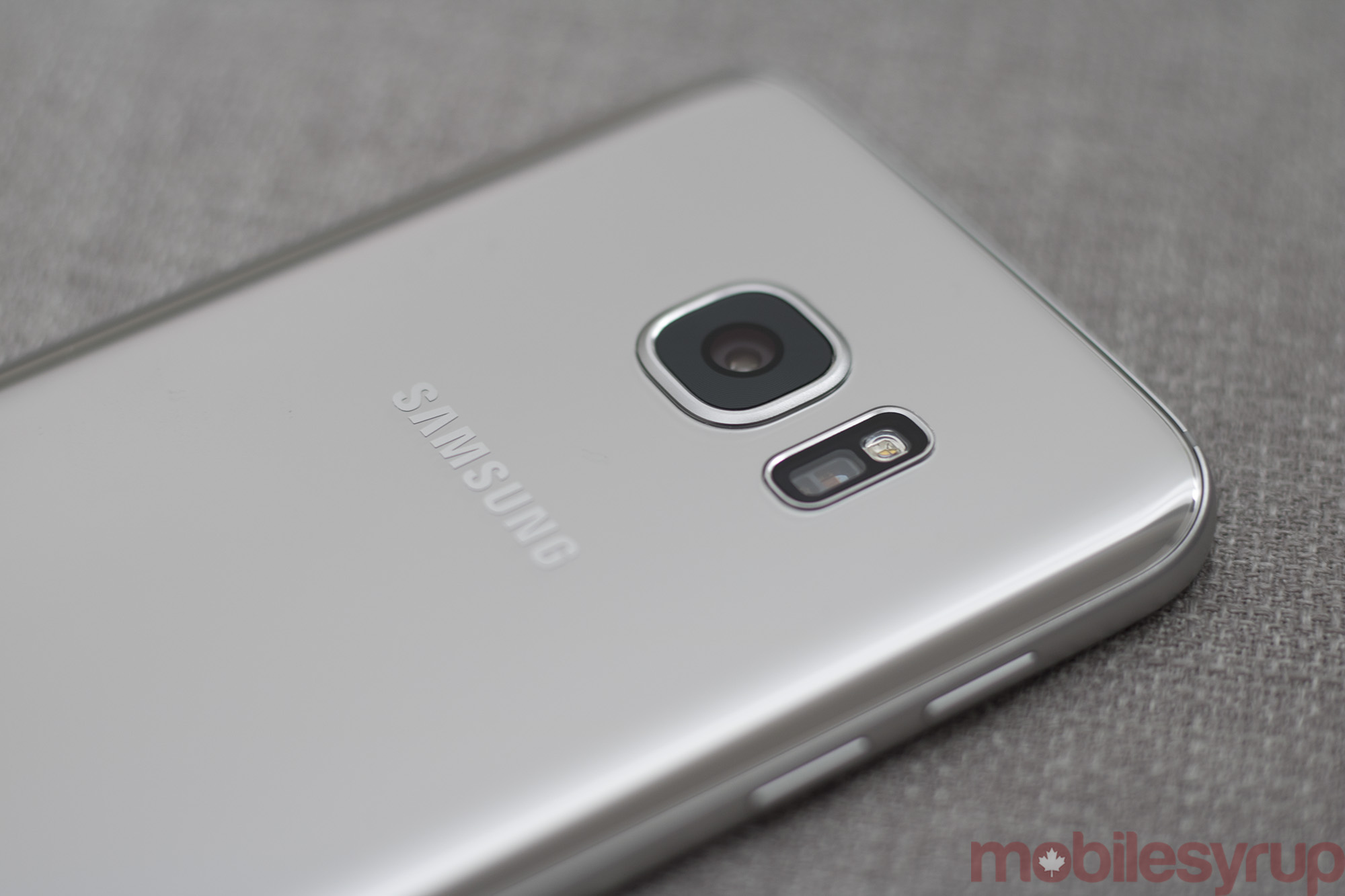
The S7’s most impressive improvement over the S6 is its camera. While the S6’s shooter was the best Android camera around when it launched last year, its lowlight performance was underwhelming.
To solve this problem, with the S7, Samsung is touting new dual pixel technology, which allows up to 25 percent more light to hit the device’s camera sensor thanks to larger pixels, but also lowers its back camera from 16 megapixels to 12 megapixels (the S7’s front-facing camera measures in at 5 megapixels).
This is similar to the technology often featured in high-end DSLRs like the Canon 70D. Double-pressing on the home button still launches the S7’s camera app, just like it did with the S6.
In my experience, the S7’s camera takes vibrant photographs and features the fastest autofocus I’ve ever seen in a smartphone. Switching focus between subjects can be performed in a fraction of a second, both when snapping still photos and filming video. The new camera tech also performs exceedingly well under low-light conditions, surpassing the Nexus 6P and Nexus 5X’s shooter by a considerable margin. The addition of the S7’s f/1.7 aperature also allows for interesting compositions involving shallow depth of field.
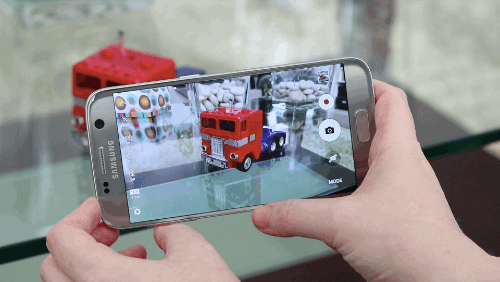
But does it take better photographs than the current smartphone camera king, the iPhone 6s Plus? This is the question our readers are likely asking as I gush about the S7’s impressive photography capabilities.
Some will disagree, but I actually think the S7 surpasses the iPhone 6s Plus marginally, especially when it comes to taking pictures under less than ideal lighting conditions. It’s worth noting, however, that the S7’s camera does seem to suffer from white balance detection issues, especially under tungsten lightbulbs.
A closer look at the s7 edge
The Galaxy S7 edge is Samsung’s most refined and accomplished smartphone to date. It takes the already significant strengths of the Galaxy S7 and adds to them in ways that make sense.
The star of the show is the edge’s QHD display. If you’re like me, you prefer your phone on the slightly smaller side. The good news is that, even at 5.5 inches, the S7 edge doesn’t feel like a big phone; in fact, between improved ergonomics and its signature curved display, the S7 edge is always comfortable to hold and it’s even possible to use it with one hand — though just barely.
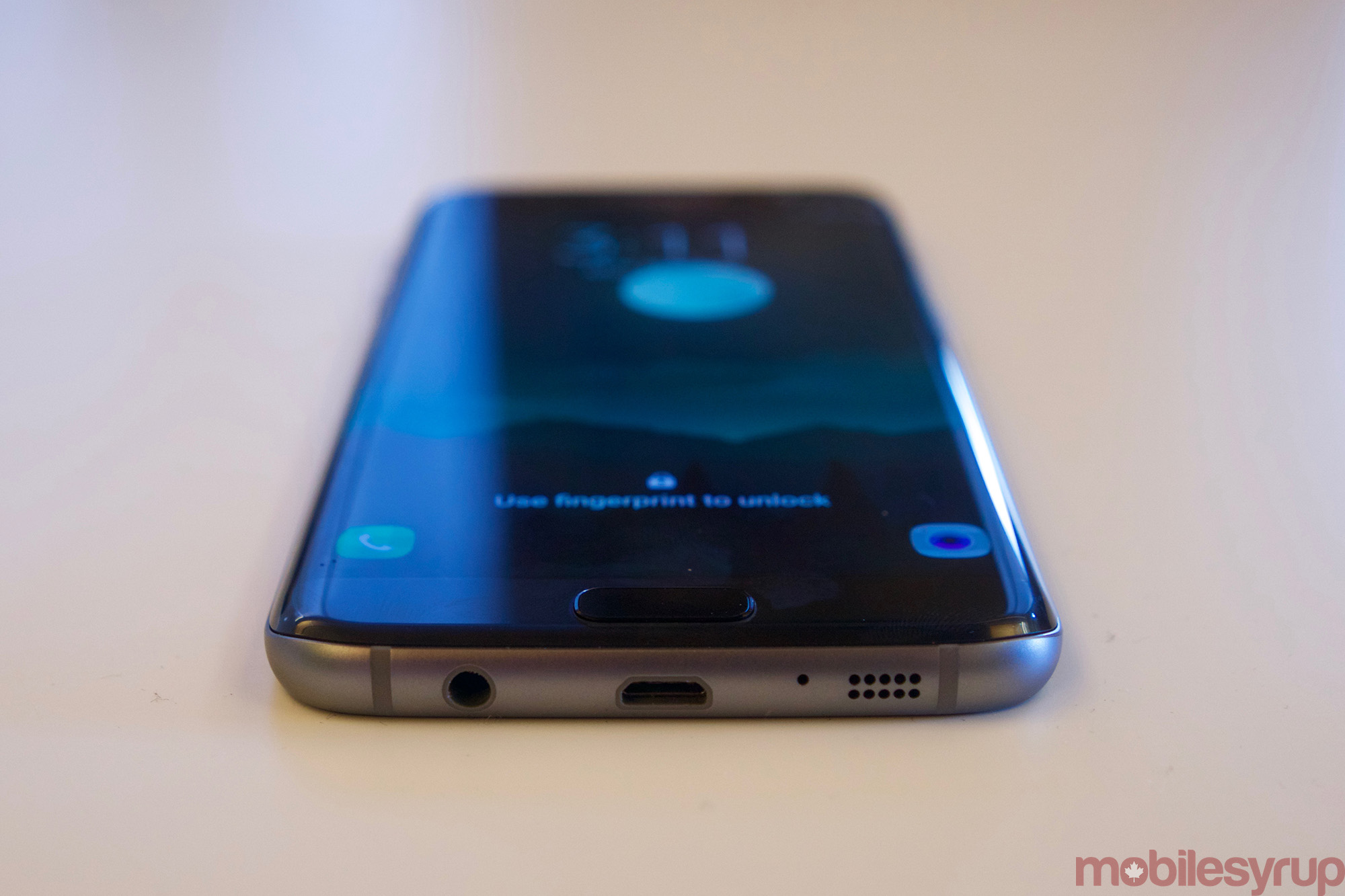
And while the curved display still doesn’t add a whole lot of functionality to the smartphone, there’s no denying that even a year after the release of the S6 edge, it’s still a sight to behold.
A large 3,600mAh battery also keeps the unit running, even through a busy day. I’ve used this phone as my main device for the past week and have routinely been able to get almost two full days usage on a single charge.
However, what this phone doesn’t represent is a significant move towards a more useable version of Samsung’s Android skin, TouchWiz. Granted, there are improvements here — creating folders is finally as easy as dragging one app on top of another, for example — though a lot of the TouchWiz is still unintuitive, especially for someone coming from a more stock version of Android. Switching keyboards, for instance, still requires the user to pull down the notification shade and tap on the keyboard tab.

On the plus side, Samsung makes a more compelling software case for the edge’s curved display than it did last year. There’s the new Tasks edge feature, which allows users to pin specific app actions to the side of the screen. For instance, the user can add a shortcut to jump to the Clock app’s timer feature or to open a new tab in the included web browser.
The caveat, for the time being, is that this feature only works with Samsung’s first party apps. Also new are vertical widgets, which actually convinced me to start using widgets because they don’t take up a huge part of the screen and are hidden most of the time. That said, even with the new edge features in tow, I’m not convinced there’s a compelling case to spend an extra $100 on this device.

There’s no doubt in my mind this is Samsung’s best phone to date, but the simple economics of the S7 edge make it even harder to recommend than its predecessor.
If you have the money to spare, then yes, this is a great phone to buy. Otherwise, there are more functional — though less striking — alternatives out there for a lot less money.
Igor Bonifacic also contributed to this review.
Conclusion: An iterative future
With the S7 and S7 edge Samsung has made a number of subtle innovations. For some, however, these changes likely won’t be enough, especially those who already own the S6 or S6 edge. When the S7 and S7 edge’s hefty off-contract cost – $900 and $1000 respectively – and on-contract two-year price – $400 vs. $500 – are taken into consideration, Samsung’s new flagship Galaxy line is an expensive proposition. But if you’re looking to pick up a new Android phone, or are currently holding onto an aging S4 or S5, Samsung’s latest flagship effort amounts to one of the sleekest looking high-end Android smartphones on the market.
"The Galaxy S7 edge is Samsung’s most refined and accomplished smartphone to date."
MobileSyrup may earn a commission from purchases made via our links, which helps fund the journalism we provide free on our website. These links do not influence our editorial content. Support us here.

